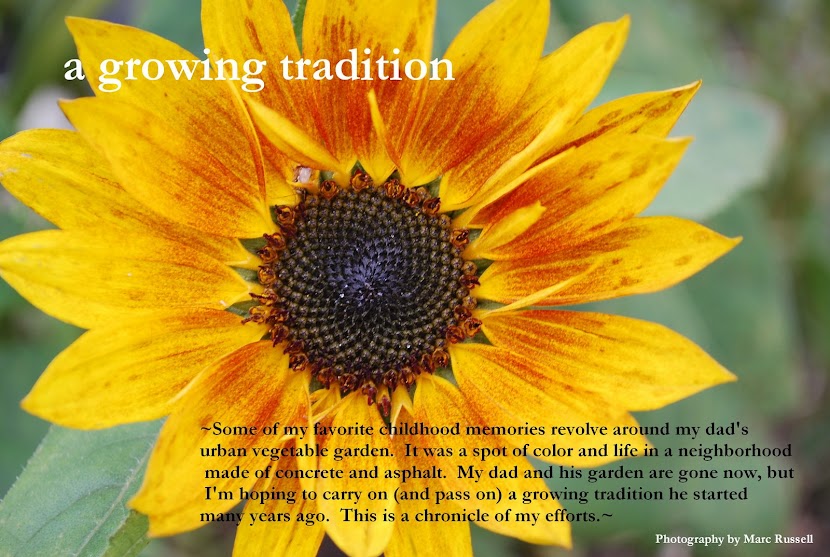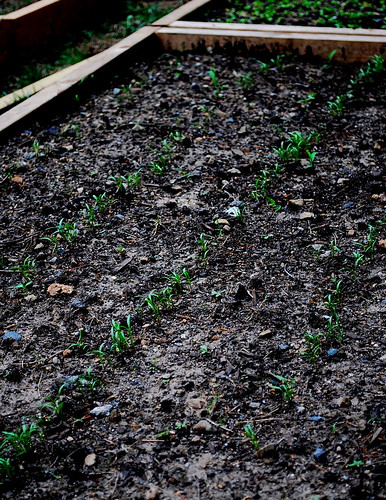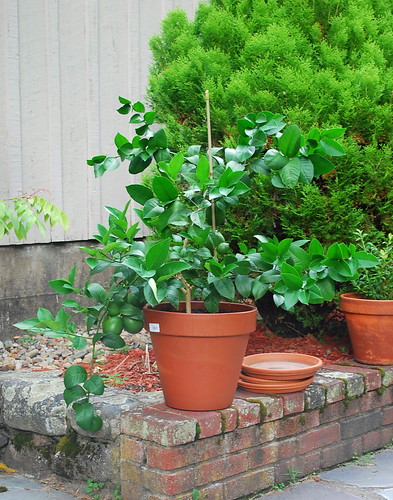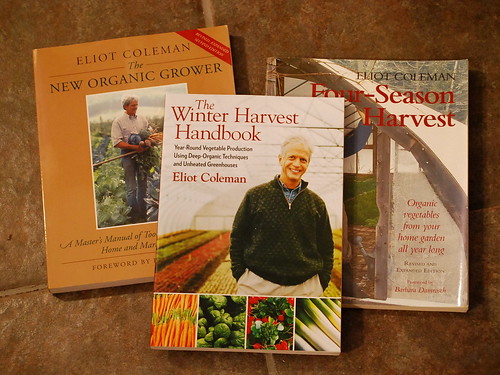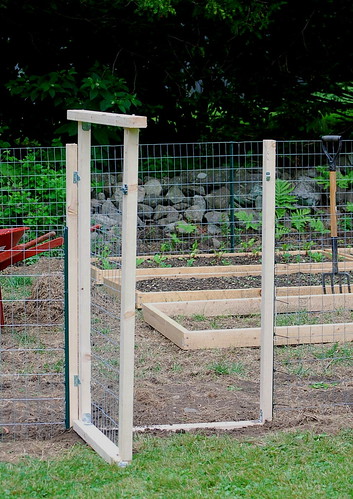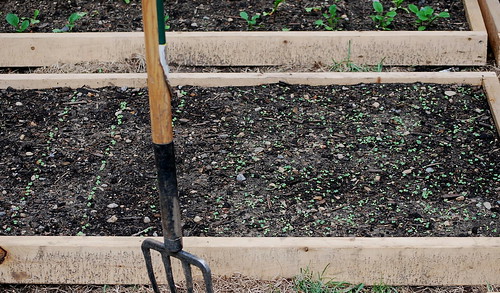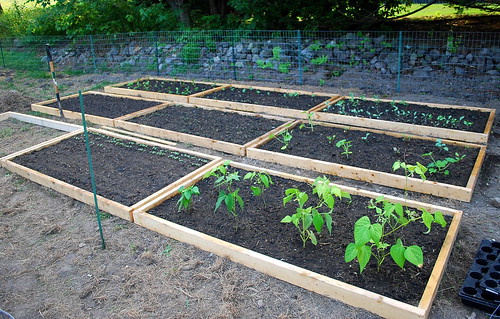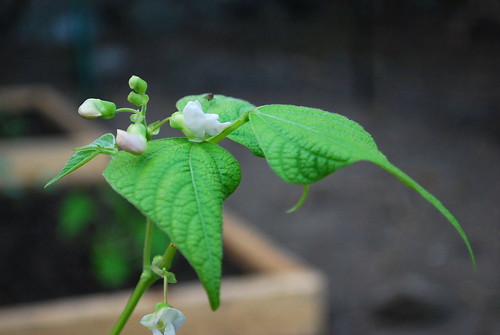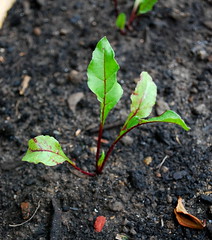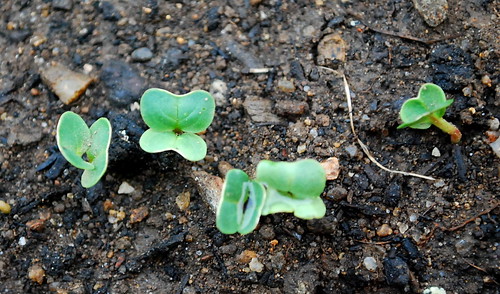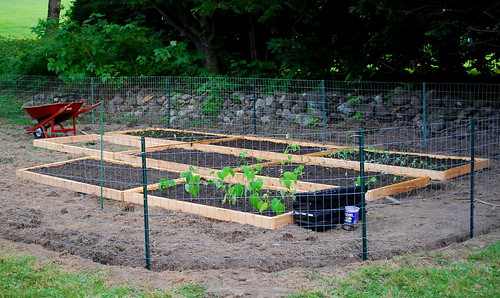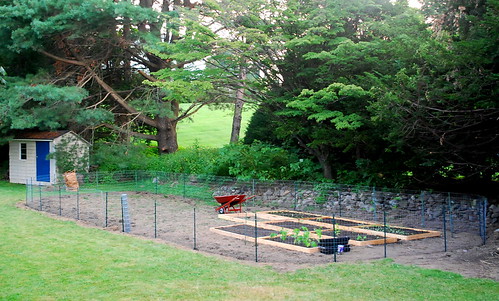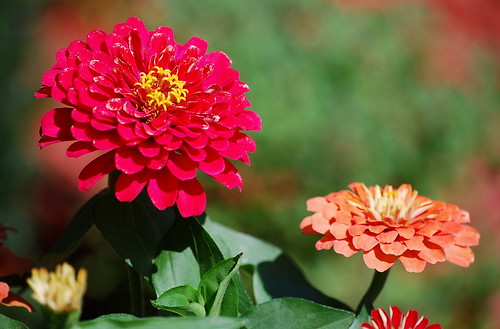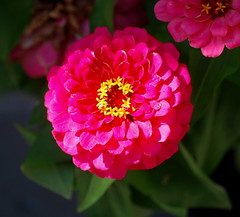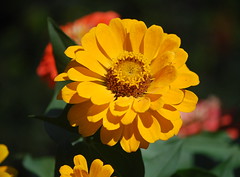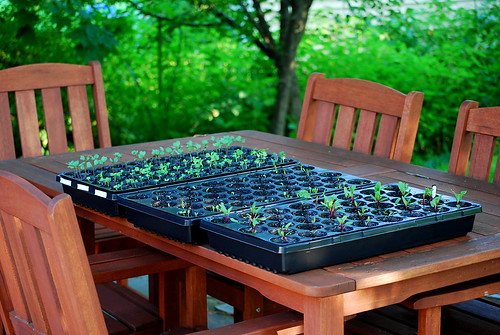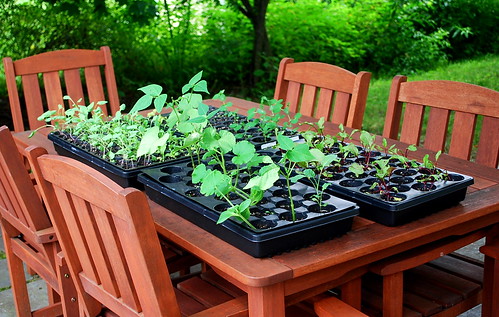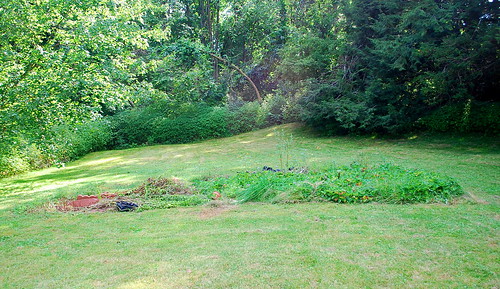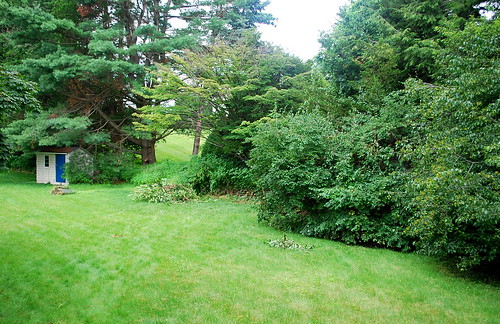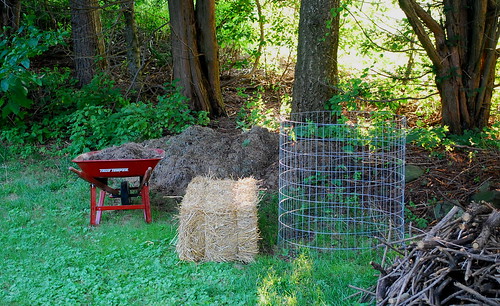
Yesterday, I started my compost pile. I figured I should find a good use for all of the grass clippings we've accumulated in the past month. It's amazing how quickly grass grows, not to mention the amount of effort that goes into maintaining a decent-looking half-acre lawn. It almost doesn't seem worth the trouble (but that's just the gardener inside me talking). Next year, I'm hoping to get most of my "green" material directly from the vegetable garden, however for this year, grass clippings will have to do.
I decided to utilize some leftover 2" by 4" wire mesh (which I used for my fencing) to construct my compost cage. The ring is held together by plastic electrical ties (easy to attach and easy to snip off). It took about 5 minutes to assemble. As far as locations go, I decided to place my compost pile behind the shed under the evergreen trees. This location is out of sight from the house (though I find nothing "ugly" about a compost pile). I figured the evergreens would act a kind of protection from heavy winter snow storms and drifts.
I'm building up my compost pile in layers of brown, green and black. I started off by putting a layer of straw into the cage. I purchased the straw this past weekend for use as a mulch in the garden and as a "brown" in the compost pile. A 50 pound bale was only $9 and more than enough to suit my needs. Adding straw ensures proper drainage and airflow. Then came a layer of grass clippings or "green". Next, I added a layer of grass roots, which I removed from the plot when digging my raised beds. The "black" component comes from the soil that's caked onto these roots and supplies the microbial life that will break down all of this material. Finally, although I forgot to do so yesterday, I will also add a fine layer of greensand and rock phosphate to top things off. So why go through the trouble of building these layers? Eliot Coleman likens this process to that of a smoldering fire. The browns provide the fuel, the greens provide the fire, and the microbial life powers the engine. Evenly distributing these elements ensures that this engine runs smoothly, or at least that's what we hope for.
After I had accumulated several layers of material, I watered the pile well. I will also cover it with a piece of tarp or old carpet to keep it moist. All that's left to do now is to slowly build up this pile and wait for mother nature to do her thing.

